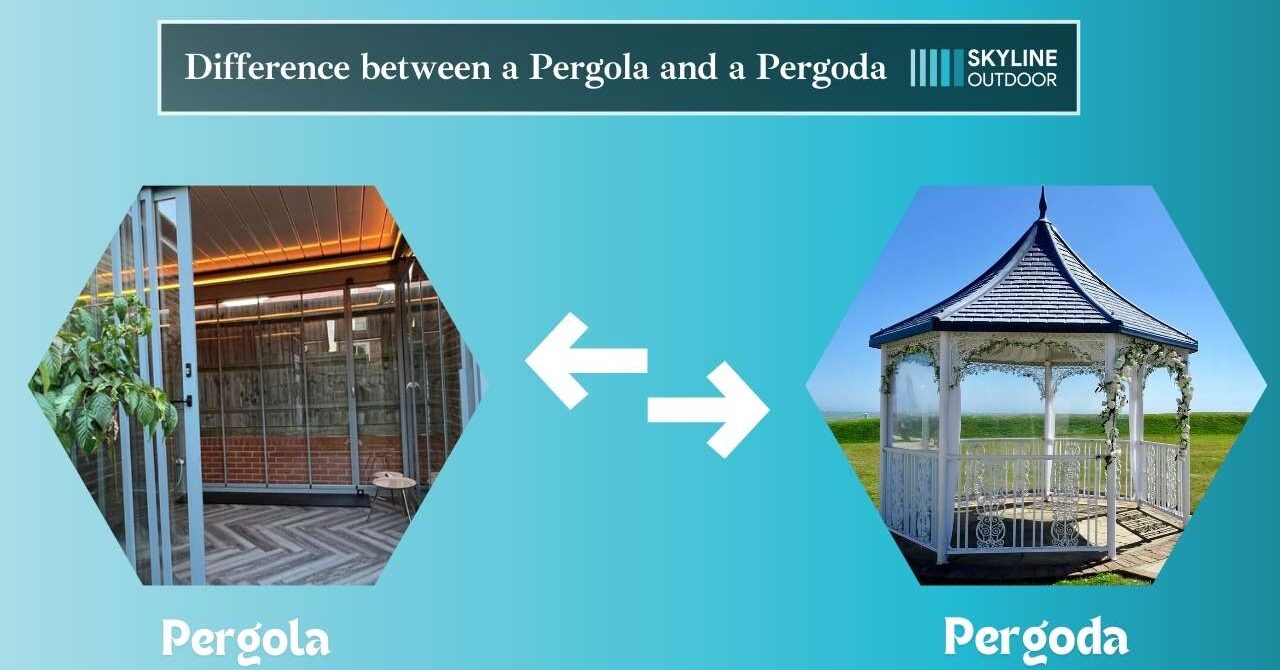At the height of summer, getting lawns and other outdoor areas ready for garden parties, BBQs, and lazy weekends in the sun is a big trend. The summer is a great time to enjoy being outside and make changes to your yard.
Of course, everyone in Britain knows that summer always brings rain, which makes us all stay inside. How can you make sure that fields can be used all summer?
Have you ever thought about building a patio cover outside to protect yourself from the weather? Incorporating a garden structure or patio roof into your garden plan can make the space much more useful and accessible all year (and all summer!).
Once you start looking into garden structures and outdoor roofs, there will be numerous patio structures on the market that you might like. Which one would best fit with your yard project?
People usually think of three patio structures when considering yard features: pergola, pergoda and pagoda. But what’s the difference between them?
Pergola
A pergola is a wooden or aluminum garden feature usually used to provide shaded paths, passageways, or places to sit in a yard. Flowering vines are usually trained to grow up and along the building to block the sun beautifully.
People frequently confuse outdoor pergolas with gazebos due to the way they can be spread out from a house’s side and used to cover patios or connect two areas. People mistakenly assume pergolas serve as “green tunnels”, however this is far from being accurate.
Green tunnels are roads made of big trees (usually hazel or willow trees) that were woven together when they were young to make a tunnel-like growth pattern naturally, without the need for a wooden structure.
An arbour is also a type of pergola, but they are very different when you look more closely. An arbour is usually a fixed wooden bench with a wooden roof attached to it and a lattice-style frame that plants can climb up and over to make a shady place to sit. This is not at all like a pergola, which blocks the sun for a bigger area instead of just one fixed bench.
Pergoda
The pergoda and the pergola are both yard structures used to provide a shady place to sit. The pergola, on the other hand, is only used as a shady place to sit and not as a path. Pergodas are like a cross between a pagoda and a pergola.
A pagoda is like a set building with a floor, walls, and a roof, while a pergola only has a roof that is covered. A pergoda is usually made of wooden decks, vertical wooden beam supports, and a wooden slat roof. The roof can be stained or painted any color.
In traditional garden designs, Pergodas are often used as covered seating areas that can also be used for meals. They can also be used as an outdoor summer room. They are sometimes used instead of an altar in a church for weddings outside to make the service more interesting.
In modern garden planning, Pergodas are often used as structures to make indoor and outdoor living and dining areas that are safe. These days, most modern pergodas are made of aluminum or another strong metal. The garden structure that was made is easy to clean and keep, and it gives a garden space a modern look.
Conclusion
Traditional pagodas and pergolas do offer some protection from the weather, but their roofs are set in place and can’t be moved or removed on sunny days to let the sun shine through.
Modern garden designs may benefit from adding modern outdoor structures like Skyline Outdoor. Constructed of different materials like aluminum and featuring technology integration for greater usefulness.
Modern pergolas have either an automated louvre roof or a retractable roof that can have wall screens and lighting built in. Because each system has slightly different features, the design and model chosen rely on the needs of the project.
Call us or visit our website to learn more about modern garden shelters.

